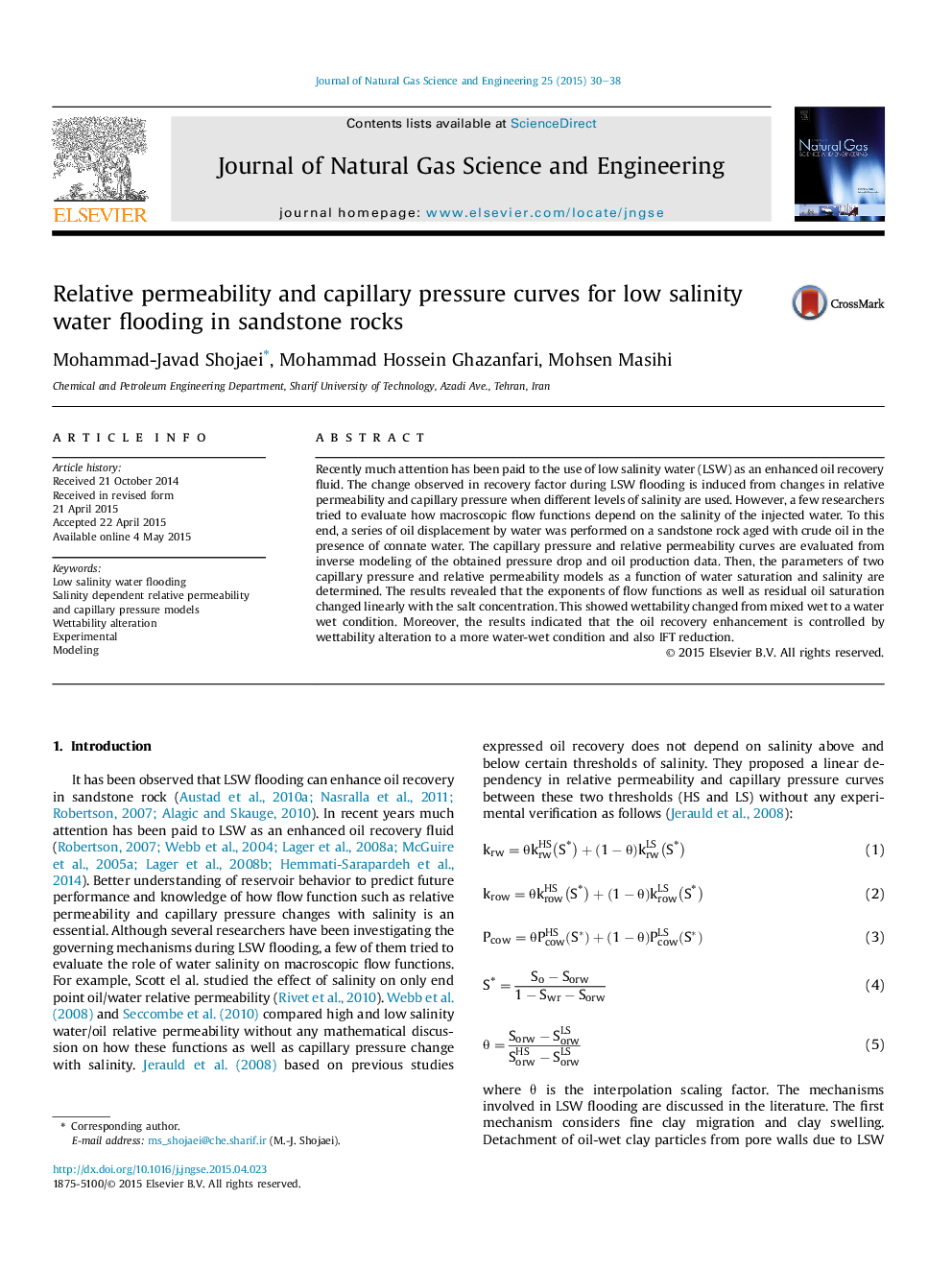| Article ID | Journal | Published Year | Pages | File Type |
|---|---|---|---|---|
| 1757683 | Journal of Natural Gas Science and Engineering | 2015 | 9 Pages |
•Relative permeability and capillary pressure models for LSWF are presented.•Salinity dependent parameters of macroscopic flow functions for LSWF obtained.•Variation of pore size distribution index with the salinity in LSWF investigated.
Recently much attention has been paid to the use of low salinity water (LSW) as an enhanced oil recovery fluid. The change observed in recovery factor during LSW flooding is induced from changes in relative permeability and capillary pressure when different levels of salinity are used. However, a few researchers tried to evaluate how macroscopic flow functions depend on the salinity of the injected water. To this end, a series of oil displacement by water was performed on a sandstone rock aged with crude oil in the presence of connate water. The capillary pressure and relative permeability curves are evaluated from inverse modeling of the obtained pressure drop and oil production data. Then, the parameters of two capillary pressure and relative permeability models as a function of water saturation and salinity are determined. The results revealed that the exponents of flow functions as well as residual oil saturation changed linearly with the salt concentration. This showed wettability changed from mixed wet to a water wet condition. Moreover, the results indicated that the oil recovery enhancement is controlled by wettability alteration to a more water-wet condition and also IFT reduction.
